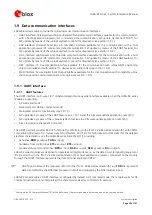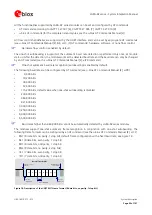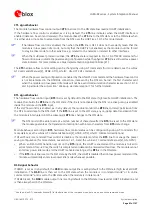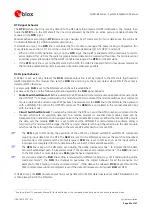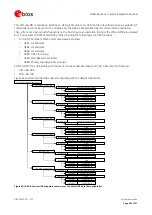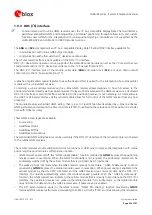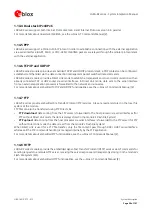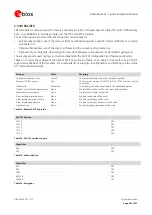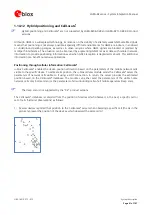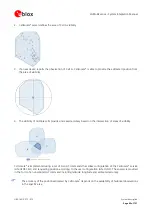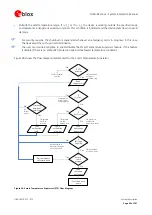
LARA-R2 series - System Integration Manual
UBX-16010573 - R12
System description
Page 51 of 157
1.9.2.2
USB in Windows
USB drivers are provided for Windows operating system platforms and should be properly installed / enabled by
following the step-by-step instructions available in the
EVK-R2xx User Guide
[3] or in the
Windows Embedded OS
USB Driver Installation Application Note
USB drivers are available for the following operating system platforms:
Windows 7
Windows 8
Windows 8.1
Windows 10
Windows Embedded CE 6.0
Windows Embedded Compact 7
Windows Embedded Compact 2013
Windows 10 IoT
The module firmware can be upgraded over the USB interface by means of the FOAT feature, or using the u-blox
EasyFlash tool (for more details, see the
Firmware Update Application Note
1.9.2.3
USB in Linux/Android
It is not required to install a specific driver for each Linux-based or Android-based operating system (OS) to use the
USB module interface, which is compatible with standard Linux/Android USB kernel drivers.
The full capability and configuration of the USB module interface can be reported by running “lsusb –v” or an
equivalent command available in the host operating system when the module is connected.
1.9.2.4
USB and power saving
The modules automatically enter the USB suspended state when the device has observed no bus traffic for a
specific time period according to the
USB 2.0 specifications
[9]. In the suspended state, the module maintains any
USB internal status as device. In addition, the module enters the suspended state when the hub port it is attached
to is disabled. This is referred to as a USB selective suspend.
If the USB is suspended and a power saving configuration is enabled by the AT+UPSV command, the module
automatically enters the low power idle mode whenever possible, but it wakes up to active mode according to
any required activity related to the network (e.g. the periodic paging reception described in section 1.5.1.5) or any
other required activity related to the functions / interfaces of the module.
The USB exits suspend mode when there is bus activity. If the USB is connected and not suspended, the module is
kept ready to communicate over USB regardless of the AT+UPSV settings, therefore the AT+UPSV settings are
overruled but they do have effect on the power saving configuration of the other interfaces (see 1.9.1.4).
The modules are capable of USB remote wake-up signaling: i.e. it may request the host to exit suspend mode or
selective suspend by using electrical signaling to indicate remote wake-up, for example due to an incoming call,
URCs, data reception on a socket. The remote wake-up signaling notifies the host that it should resume from its
suspended mode, if necessary, and service the external event. Remote wake-up is accomplished using electrical
signaling described in the
USB 2.0 specifications
For the module current consumption description with power saving enabled and USB suspended, or with power
saving disabled and USB not suspended, see sections 1.5.1.5, 1.5.1.6 and the
LARA-R2 series Data Sheet
The additional
VUSB_DET
input pin available on the LARA-R2 series modules provides the complete bus detach
functionality: the modules disable the USB interface when a low logic level is sensed after a high-to-low logic level
transition on the
VUSB_DET
input pin. This allows a further reduction of the module current consumption, in
particular as compared to the USB suspended status during low-power idle mode with power saving enabled.


